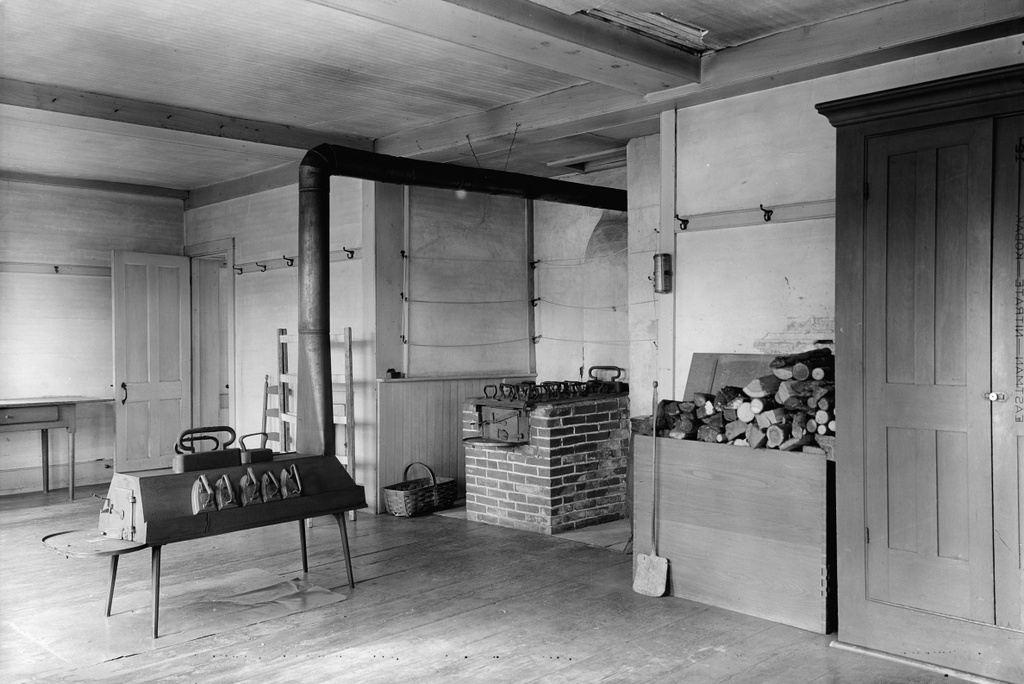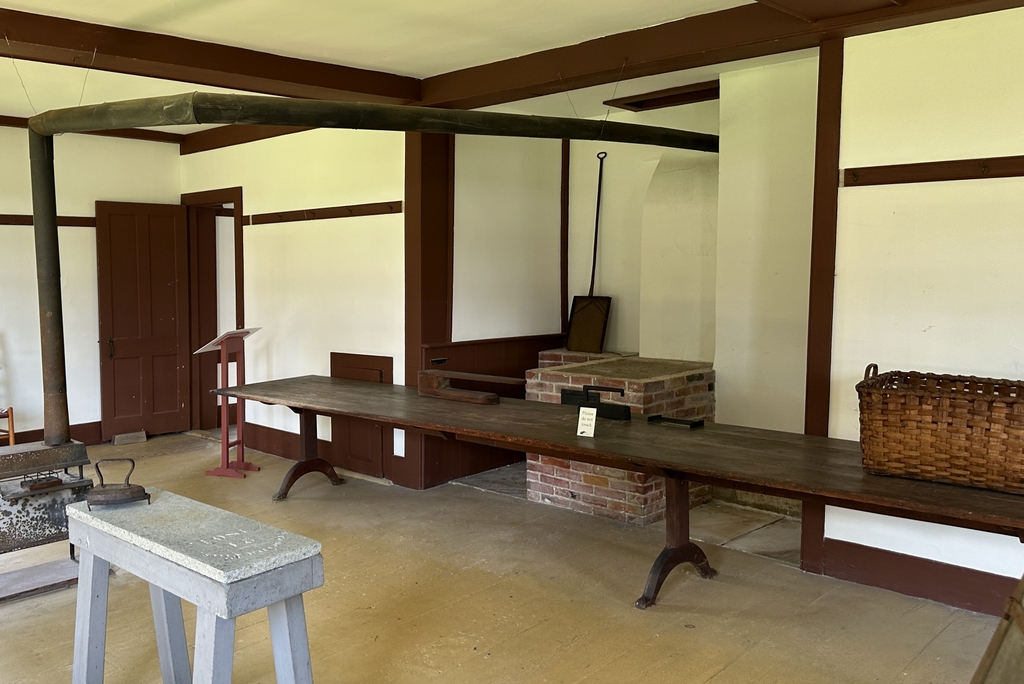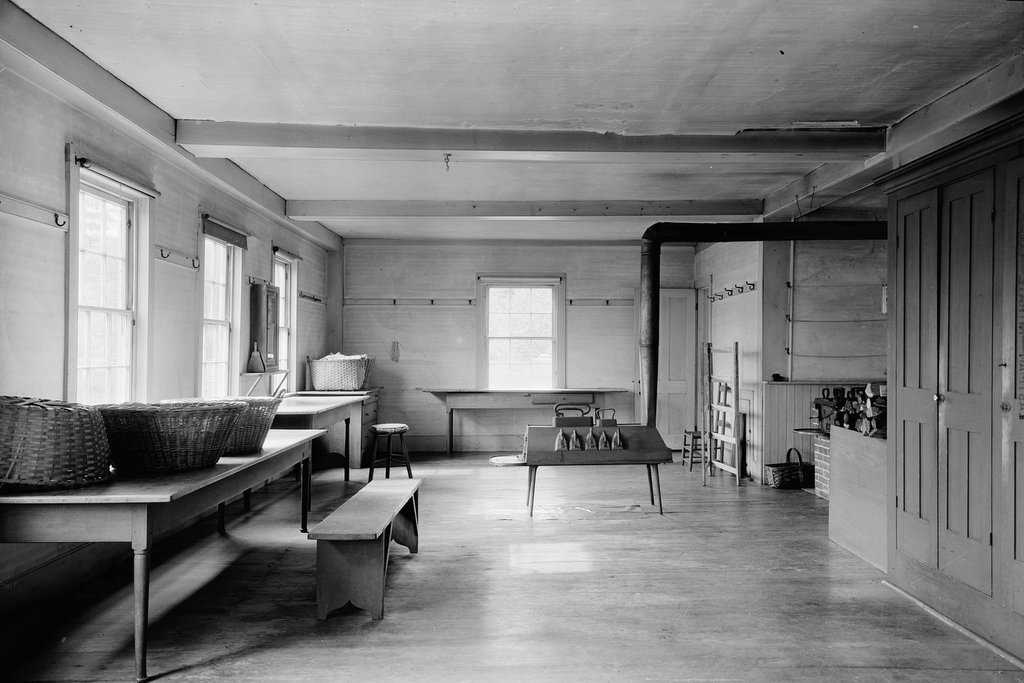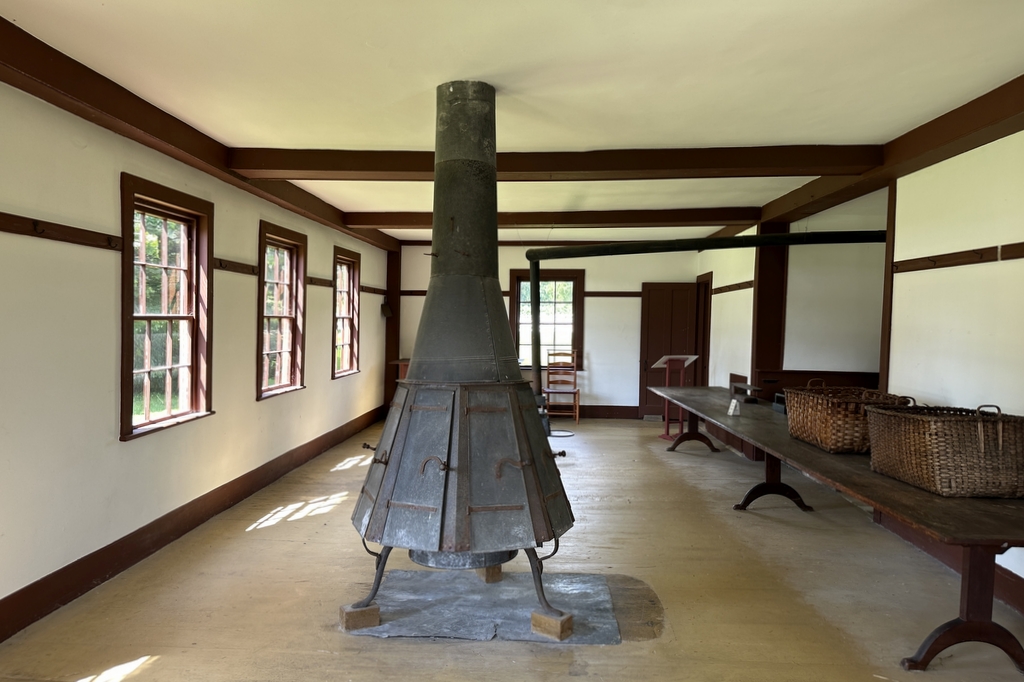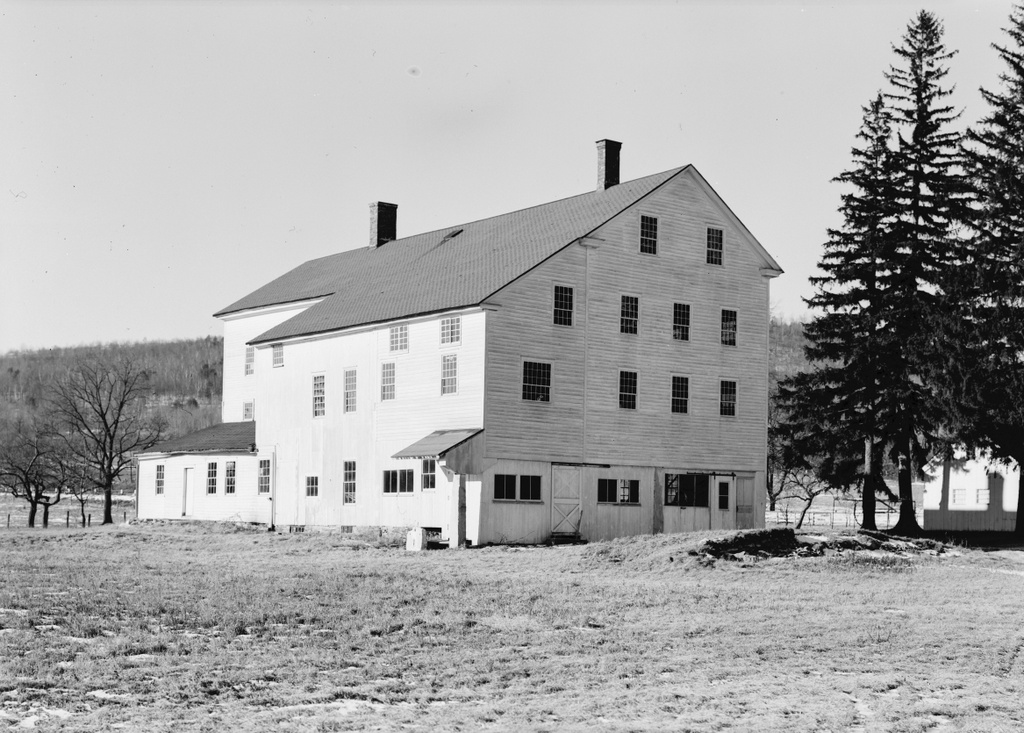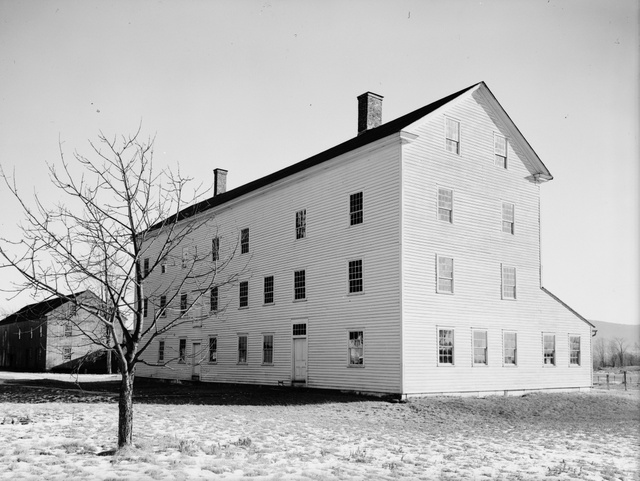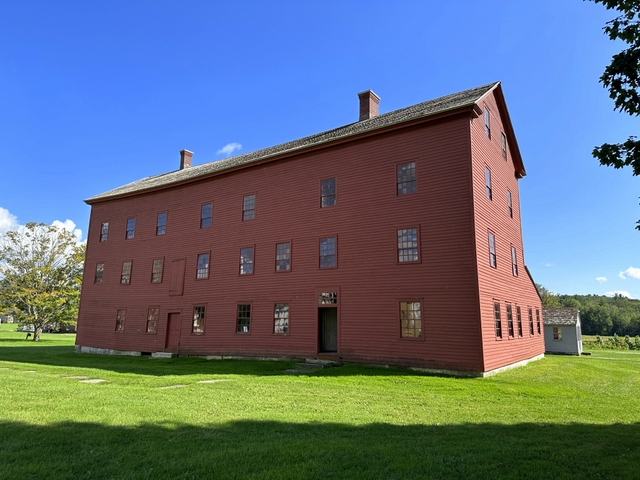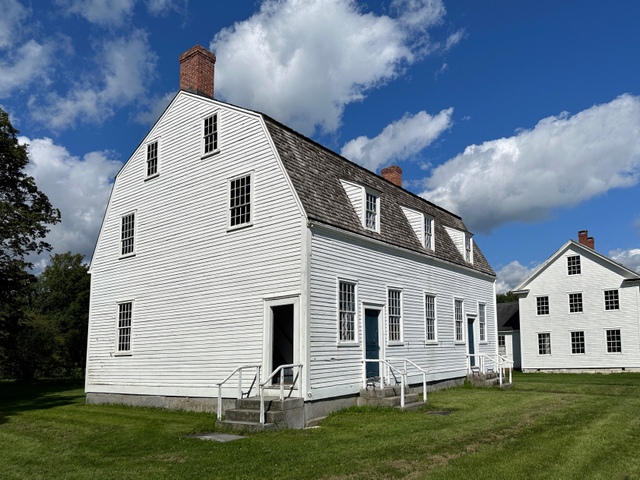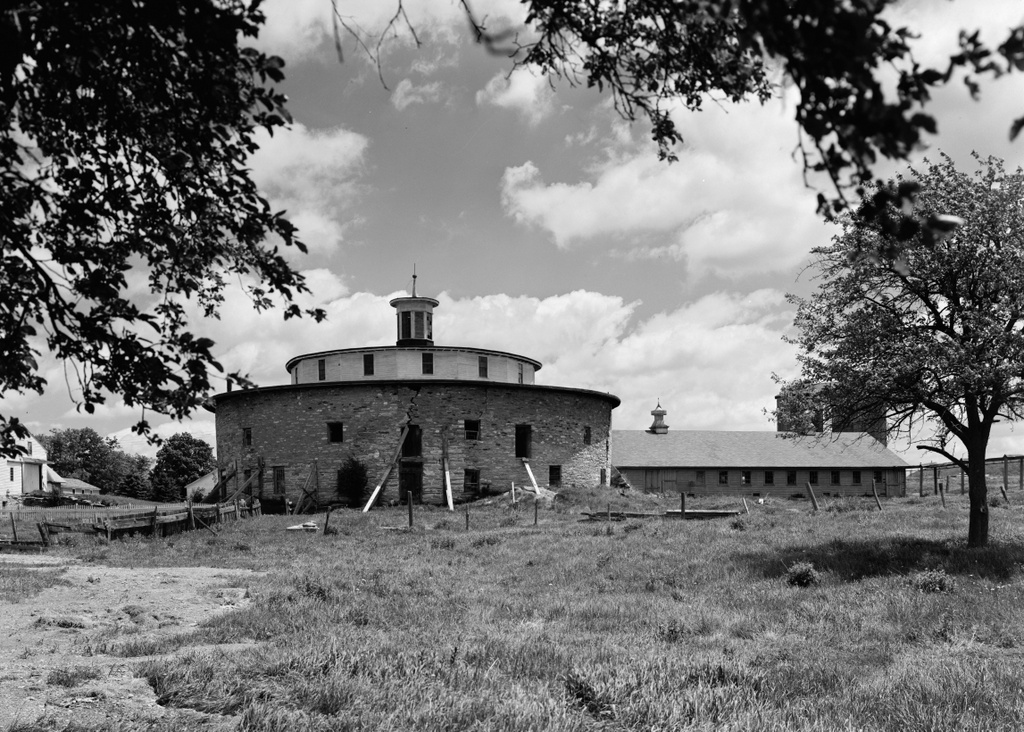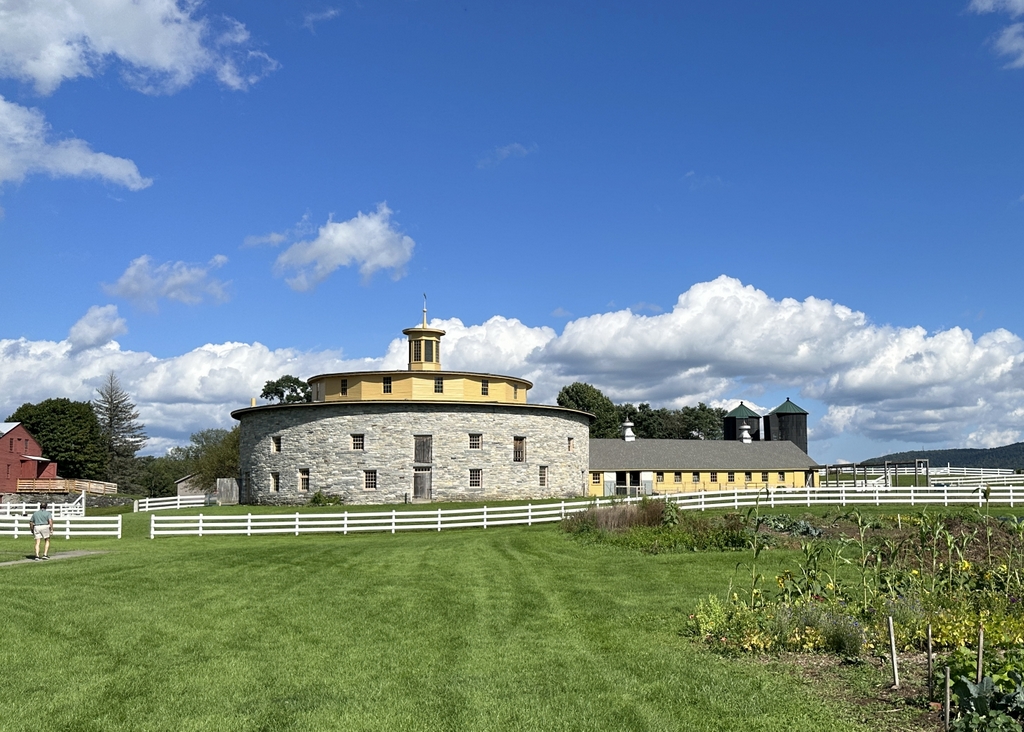The ironing room at the laundry and machine shop building at Hancock Shaker Village in 1931. Image courtesy of the Library of Congress, Historic American Buildings Survey Collection.
The scene in 2023:
As with the previous post, these two photos show the ironing room, which is located on the western side of the laundry/machine shop at Hancock Shaker Village. It is probably the oldest surviving building at the village, dating back to about the time that the Shakers settled here around 1790. For many years, this half of the building was the laundry facility for the Shaker community here, and it included a wash room and an ironing room on the first floor, and drying rooms on the upper floors.
This Shaker community ultimately closed in 1960, and the property was subsequently preserved as Hancock Shaker Village. This open-air museum features a number of historic buildings, including the laundry/machine shop, as shown here. The first photo was taken more than 90 years ago, when the site was still an active Shaker community, and since then there has been some restoration work to this room, including different furnishings and a different stove. Overall, though, it is still easily recognizable from the first photo, and the current layout shows the stoves where the irons were heated, as well as the large tables where articles of clothing and other cloth items were ironed.

